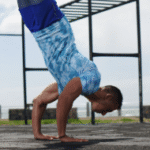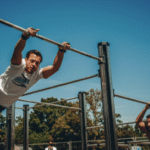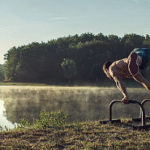How to Avoid Common Calisthenics Injuries
Avoiding common calisthenics injuries in Houston, TX, is a matter of proactive strategy , focusing on mobility , progressive overload , and acknowledging the unique challenges posed by the local climate. Calisthenics is inherently safe because it uses body weight, but neglecting foundational joint health and rushing skill acquisition often leads to setbacks.
Here is a detailed guide on how to prevent the most common calisthenics injuries.
- The Importance of Joint Conditioning (Wrist and Shoulder)
The wrists and shoulders bear the entire body’s load in most advanced calisthenics skills. These areas must be actively trained for resilience, not just passively stretched.
Wrist Strain (Most Common Beginner Injury): Beginners often jump into high-volume push-ups or handstands without preparing the wrists for full weight-bearing extension.
Prevention: Perform dedicated wrist mobility drills for 5–10 minutes before every session. This includes wrist circles, finger taps, and gentle rocking movements with hands flat on the floor (fingers pointing toward the body). When doing push-ups or handstand holds, use parallettes or handles to maintain a neutral (straight) wrist, which drastically reduces strain.
Shoulder Impingement (Rotator Cuff): Aggressive attempts at pull-ups, dips, or muscle-ups without adequate shoulder strength and mobility can cause painful impingement.
Prevention: Prioritize scapular stability . Practice Scapular Pull-ups (shrugging your shoulders down while hanging) and Scapular Push-ups (protracting/retracting shoulder blades in a plank). Also, ensure your push-ups and dips are performed with elbows tucked slightly (not flaring wide) to protect the shoulder joint capsule.
- Progressive Overload and Form (The Technique Rule)
Rushing into advanced movements is the single biggest cause of injury. Progress must be earned incrementally.
Avoid the “Ego Lift”: Never sacrifice form for more repetitions or a harder progression. When form breaks down (e.g., lower back arches during a pull-up or plank), stop the set. Sloppy reps build bad habits and lead to injury.
Scale Movements Appropriately: Use regressions (easier variations) until you achieve the target volume (e.g., 3 sets of 12 reps) with perfect form.
For Pull-ups: Use Australian Pull-ups (inverted rows) or resistance bands for assistance before attempting full bodyweight pull-ups.
For Dips: Start with bench dips or use a resistance band loop before moving to full parallel bar dips.
Eccentric Training: Focus on the negative (lowering) portion of the movement (e.g., taking 3–5 seconds to lower yourself from a pull-up). This builds tremendous strength and joint stability, which is highly protective against injury.
- Consistency and Recovery (Long-Term Health)
Consistency in recovery prevents chronic overuse injuries, which are common among dedicated athletes.
Listen to Tendons and Joints: Muscles recover faster than tendons and ligaments. If you feel pinching or dull joint pain (especially in the elbows or wrists), it is a clear sign of tendon overload. Reduce the intensity or volume immediately. Do not push through joint pain.
Integrate Mobility Work: Treat mobility like part of the workout, not an afterthought. Dedicate 10–15 minutes post-workout to static stretching, foam rolling, and mobility drills (especially for the hips and thoracic spine) to maintain your full range of motion.
Structured Deloading: Every 6–8 weeks, take a planned deload week where you reduce your training volume by 50–60%. This allows your tendons and nervous system to fully recover, preventing burnout and injury.
- Houston-Specific Safety Considerations
The local environment adds unique risks that must be managed to maintain consistency.
Hydration and Heat: The Houston heat and humidity from May through September greatly increase the risk of dehydration and heat exhaustion, which can lead to dizziness, poor focus, and form breakdown. Hydrate aggressively and avoid intense midday training (10 AM – 6 PM) .
Finding Safe Surfaces: When training in parks like Memorial Park , be mindful of uneven pavement or slick metal bars due to humidity. Use liquid chalk to ensure a reliable grip on the pull-up bars.
Seek Expert Assessment: Investing in an initial session with a Houston calisthenics coach or physical therapist is the best defense against injury. They can identify your personal weak links (e.g., tight hip flexors or a weak core) and prescribe corrective bodyweight exercises before you get hurt.

How to Avoid Common Calisthenics Injuries
Route
Calisthenics Gym Houston Functional Bodyweight Training
Secondary phone: (346) 483-3195
Email: info@calisthenicsclubhouston.com
URL: https://calisthenicsclubhouston.com/
Monday 6:00 AM - 7:00 PM Tuesday 6:00 AM - 7:00 PM Wednesday 6:00 AM - 7:00 PM Thursday 6:00 AM - 7:00 PM Friday 12:00 PM - 6:30 PM Saturday 9:45 AM - 12:00 PM Sunday 3:00 PM - 5:00 PM





